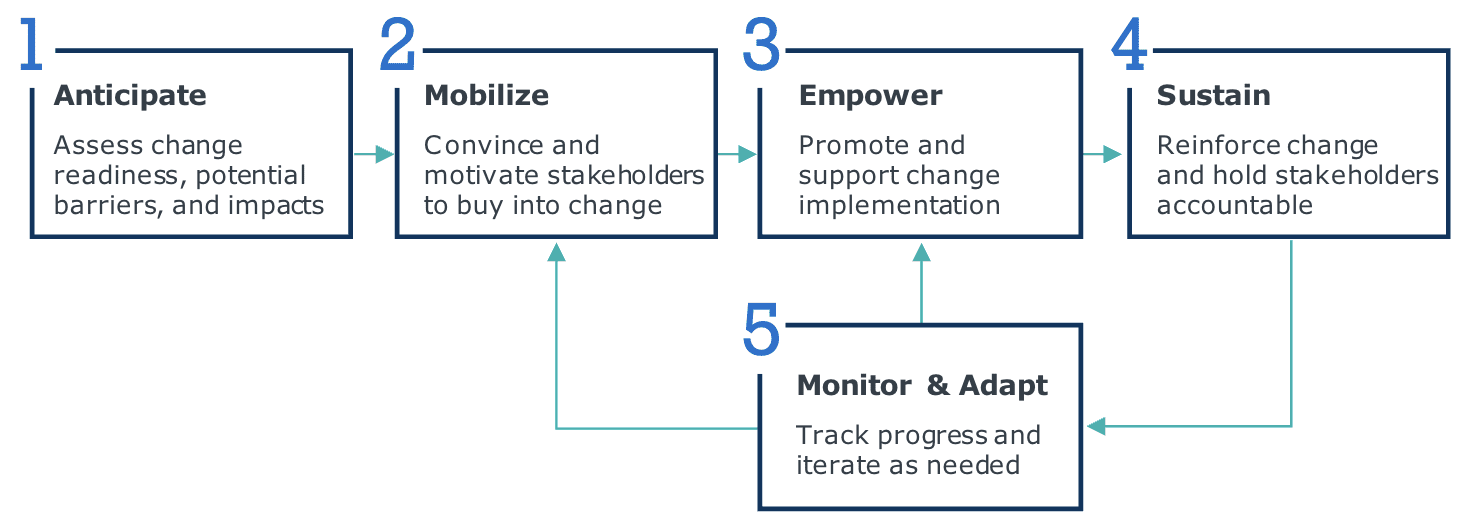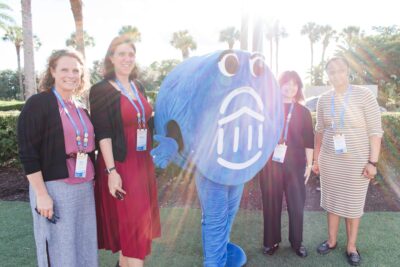4 ways to build faculty buy-in for student success initiatives
The role of faculty in improving student outcomes cannot be overstated. Faculty members are in a unique position to provide academic and personal support to students, and their guidance can have a positive impact on student outcomes. However, securing faculty buy-in for major student success initiatives is seldom easy.
Common barriers to faculty engagement include resistance to longstanding workflow changes or resistance to new technology in general. These are exacerbated by other barriers that often show up in higher education, such as incremental thinking, defaulting to the status quo, and organizational bureaucracy. However, experience has shown that when institutions understand and acknowledge these barriers, they can actually turn them into launching pads that make their initiatives more successful.
Read this post to learn four ways to overcome common barriers and build faculty buy-in.
Resistance to change is common
In recent EAB polls about this topic, we asked success leaders which of these barriers their institution struggles with most:
- Lack of clarity around “why”
- Workflows don’t reflect need
- No peer examples from similar institutions
- Resistance to change
-
65%
of surveyed success leaders selected resistance to change as the most common obstacle they face when rolling out new initiatives.
4 ways to build buy-in
1. Engage faculty and other key stakeholders from the start
When introducing new technology or initiatives, it’s essential to involve faculty and key stakeholders early and often in the decision-making process. Without their input and buy-in, new student success initiatives can feel like an imposition to faculty members. Leveraging the expertise and strengths of faculty and others can help ease the implementation process and ensure a smoother transition.
To avoid initiatives feeling burdensome, it’s important to give stakeholders some autonomy and options during the implementation phase. This allows them to have a sense of control over the changes. Tying new initiatives to your institution’s strategic goals can also help to gain support and ensure alignment with the organization’s overall mission. Most importantly, you should avoid top-down approaches, as they rarely succeed. Instead, a collaborative and inclusive approach is more likely to achieve successful implementation and adoption of new initiatives.
Read our study: Defining the Faculty Role in Student Success
2. Define your “why”
When implementing a new program or technology, it’s important to specify your why and articulate expectations for each audience. Simply targeting “faculty” is too vague. Instead, it’s important to identify specific groups of faculty who have the most to gain from the initiative. Additionally, the term “engagement” can be ambiguous for their involvement with a new initiative, so it’s crucial to clarify its meaning and ensure that it represents discourse rather than just utilization. Finding a faculty champion can also be beneficial in driving adoption and buy-in from others.
Our Navigate360 partners, for example, used regional ambassadors to promote the adoption of the Navigate360 platform. The ambassadors translate the benefits of the platform to their respective units and communicate the unique value proposition, such as improving graduation and retention rates, reducing time to degree, or offering personalized outreach to students. Through peer-to-peer promotion and ongoing recruitment, the program can become self-growing and self-sustaining.
Specifying your why and leveraging the power of faculty champions and ambassadors can be critical in successfully implementing and promoting a new platform or technology.
In practice: Early alerts
Formalizing early alert reasons is crucial to maximize the impact of an early-alert initiative. To do so, I recommend you create a short list of descriptive early alert reasons that are insightful, actionable, and measurable. This will help streamline the faculty decision-making process and avoid indecision. By providing faculty with a clear set of reasons, you allow them to match students with the best interventions and support staff, ensuring a more targeted approach. Standardizing early alert reasons also allows for better reporting to assess the overall effectiveness of the early-alert system.
Infographic: How to bridge the gaps in your early alert program
3. Create mutual accountability
When implementing any initiative on campus, it’s important to establish two-way accountability between leadership and faculty. For example, when establishing an early-alert system, communicate that faculty are responsible for regularly submitting alerts and kudos for students and responding to progress report campaigns in a timely manner. Meanwhile, leadership is responsible for clearly defining processes and workflows and sharing data.
In practice: Progress reports
By thinking creatively and collaboratively, a public university in the Midwest was able to achieve record response rates from progress reports. During a Retention Summit discussion, faculty representatives had the opportunity to provide their input and express their concerns. They maintained transparency and accountability by regularly updating the deans on the response rates during and after the progress report campaigns. Additionally, the faculty and colleges with the highest participation were given recognition by the provost and deans. To further engage with faculty members and create a feedback loop, the university established a Navigate Faculty Advisory Board, which is engaged on a regular basis to track progress and provide feedback.
By creating two-way accountability between leadership and faculty and implementing strategies to improve engagement and communication, institutions can improve the effectiveness of their initiatives and better support student success.
How do you measure student success?
4. Leverage proven frameworks
To ensure successful adoption of student success initiative, it helps to follow a change management framework. Infusing change management principles into your success initiatives—such as Kotter’s 8-Steps for Leading Change or the framework below developed by EAB—can help you anticipate potential barriers in the implementation process. At one of our Navigate community college partners, leadership assessed organizational and stakeholder readiness for change and built and deployed a network of champions to endorse and model the change. To ensure effective implementation of the change, leadership identified the key units and stakeholder groups that would be most affected and utilized various communication methods, including coffee chats, liaisons, and a task force, to engage with these groups.

By adopting a structured change management framework, institutions can streamline the implementation of new initiatives and foster a higher level of engagement from faculty members.
In conclusion: The shared objective is to see students thrive
At the end of the day, stakeholders across campus, especially faculty, want to do what is best for students and their success. Leaning into that shared goal and doing the sometimes hard but crucial work of gaining and maintaining faculty buy-in will directly impact the success of new initiatives.

More Blogs

Four signs it’s time to break up with your student CRM

Three lessons from 1,200 student success leaders on higher ed’s future
